Artist in Residence Program
2013 Resident Artist
ARCUS Project’s Artist-in-Residence Program received 344 applications from abroad (64 countries and regions). Following a careful screening process, Rodrigo González Castillo (Mexico), Sybille Neumeyer (Germany) and Nandesha Shanthi Prakash (India) have been selected as the 2013 residents. The artists will participate in a residency at ARCUS Studio in Moriya, Ibaraki, for 100 days from September 11 to December 19, 2013.
As the judges for this year’s applications, we welcomed Horiuchi Naoko, a curator at Arts Initiative Tokyo [AIT] as our guest curator and Keith Whittle, an independent curator who made the selection through a process of discussion with the ARCUS Project Administration Committee.
Rodrigo Gonzalez Castillo
Mexico
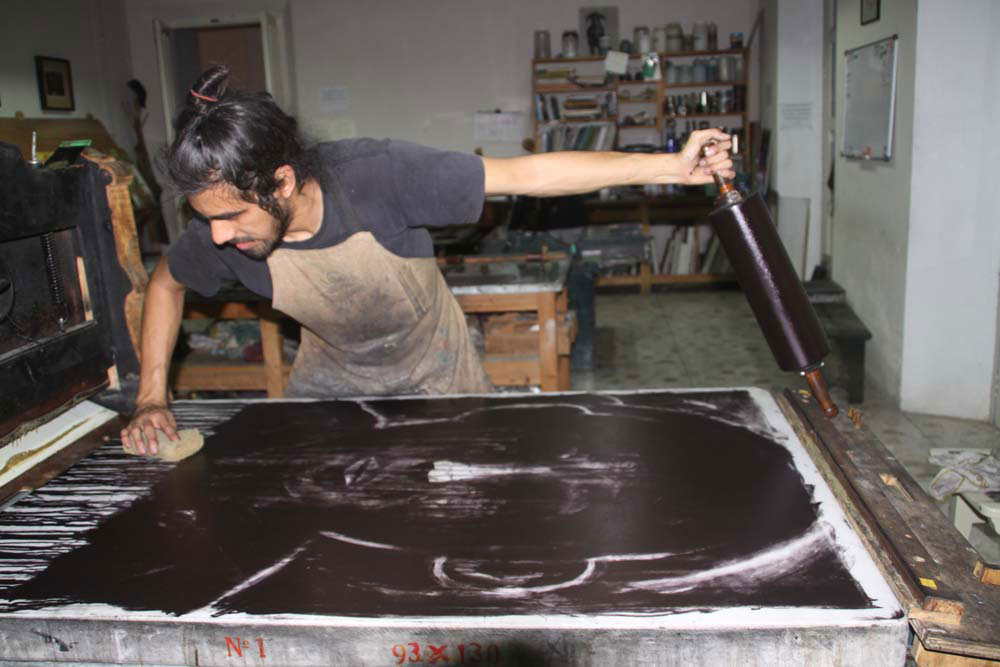
Born in Oaxaca in 1984. Graduated from Veracruzana University in Mexico, Castillo mainly uses lithograph as well as various plates and techniques such as limestone, polyester, woodblock, and linocut for his printmaking methods. From 2009 to 2013, Castillo worked at the leading art center, “La Ceiba Gráfica”, assisting artists’ printmaking process and holding experimental printmaking workshops. By the development of the age of Internet, we can easily access and share other cultures images. He is interested in their unique visual cultures and its process how they’ve developed, such as crafts of Huichol tribe from Northern Mexico and Japanese wood block paintings. Major solo show of Castillo was shown at “Local totem”, Monterrey Museum of Modern Art, Mexico 2012, also group shows, “La expendeduría”, San Miguel de Allende, Mexico, 2013, “Sabor”, Leonardo Codex Art Assemblage, New York 2012, “Lo continuo y lo discrete”, Galeria de Arte Contemporáneo de Xalapa, Veracruz 2010.
Selected Works
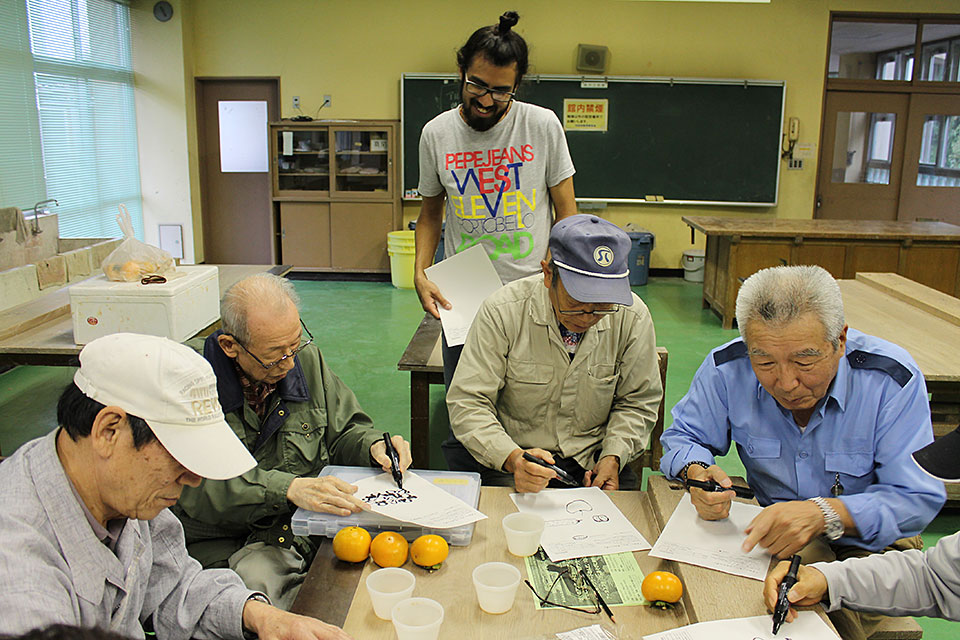
Workshop “Draw me Something” with a ceramic circle at Moriya Manabi-no-sato
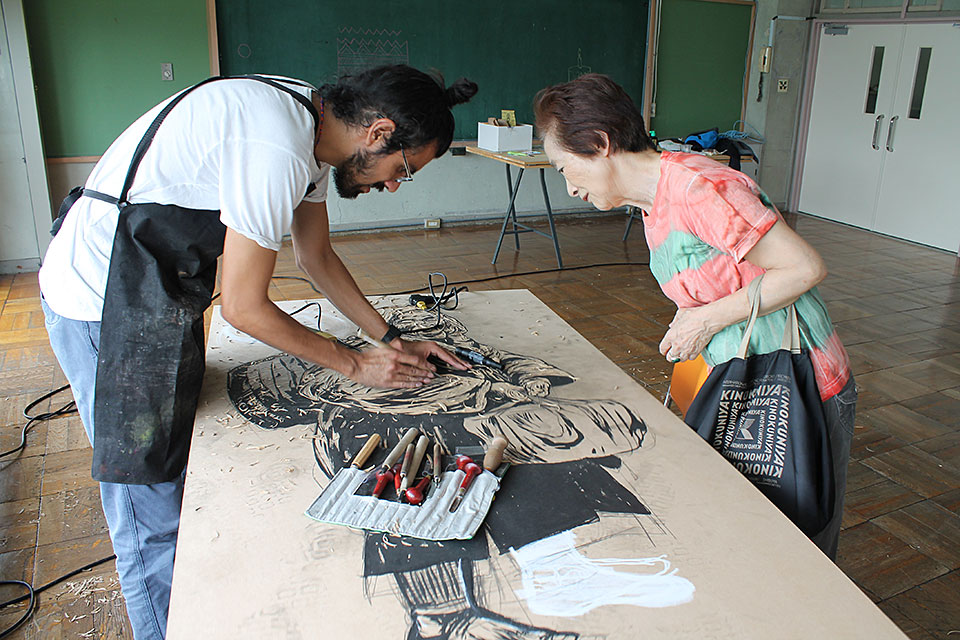
Carving at the studio
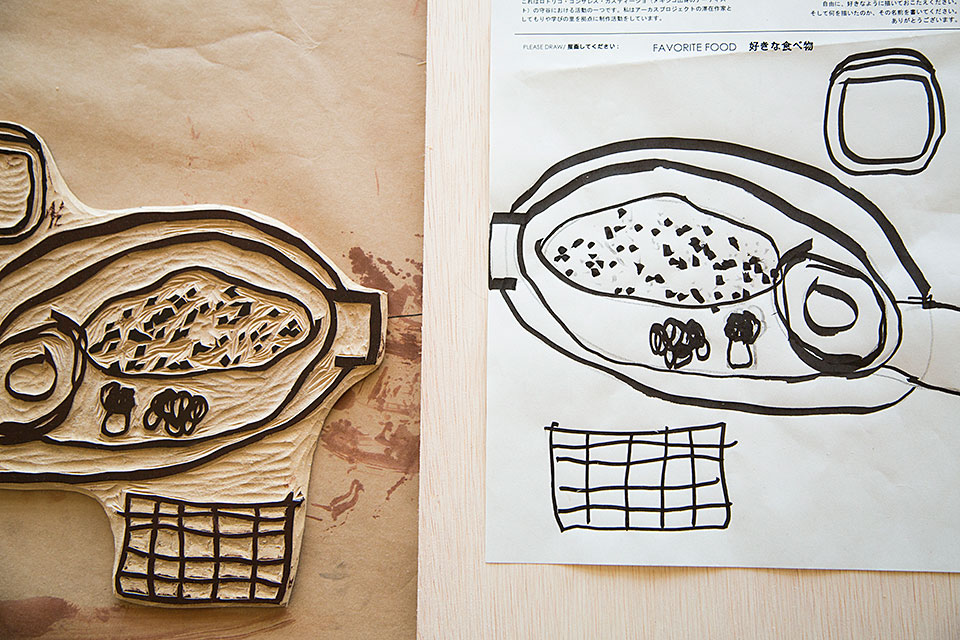
Workshop “Draw me Something”

Install woodprints in Moco-bus (Moriya community bus)
Open Studio

NOW&THEN
Installation
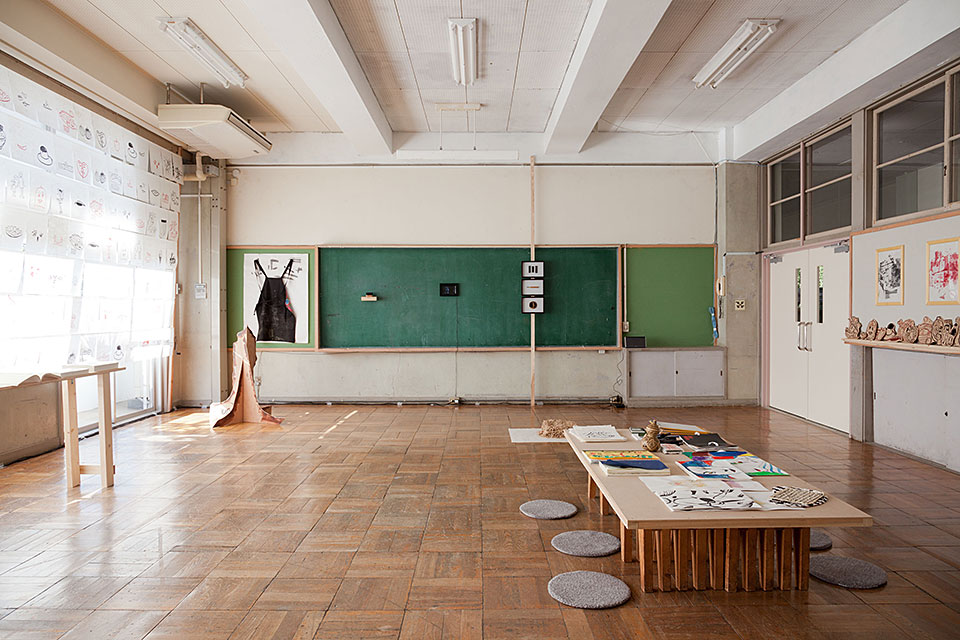
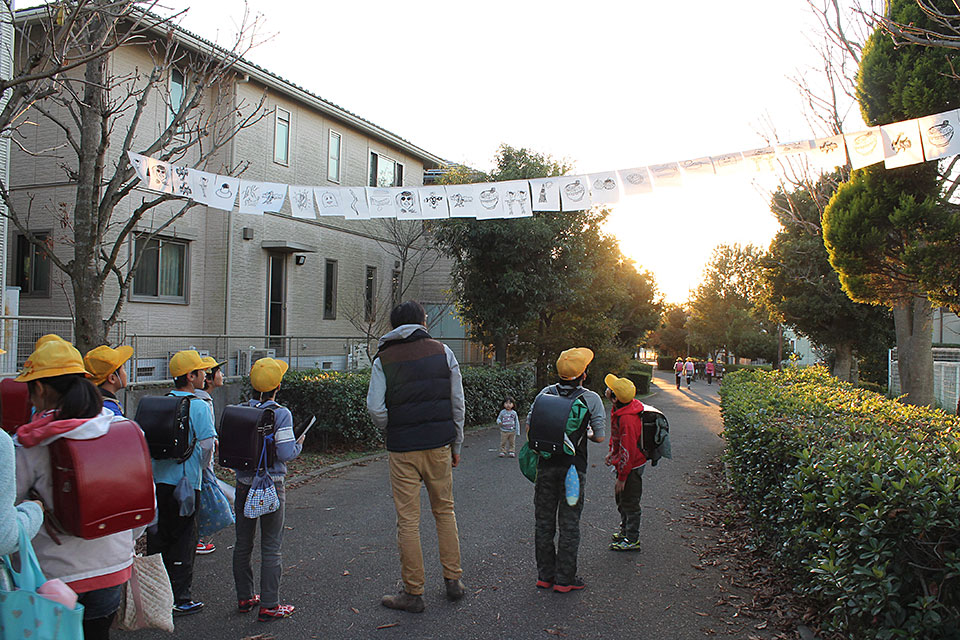
Install woodprints at several places in Moriya
Artist Statement
Now&Then is a project that focuses in a comparison between the visual language of the elder and the children of Moriya through drawing and printmaking. The main objective for working with these topics has to do with an interest of showing a direct and intimate panorama of everyday life in Moriya, Japan. Using drawing and printmaking as primary tools, I want to transmit a feeling of community and identity, shared between the children and the elder people as members of the same city; and to activate a visual interaction in which the participants of the project could find new meanings and relations.
Reason for Selection
The installations of “DESAPARECIDOS”, displaying missing people’s portraitures and “TOTEM,” pilled up printing blocks with curved motifs of cars and ancient ruins on the street, his work attracts me by expressing contemporary Mexican social environment through printmaking method.
At ARCUS, Castillo will focus on children and elders, the two different generations, to research their interests and memories; how they imagine their future by visiting school, coffee shops, library and hospital. Collected materials will be expressed onto the wooden blocks. Apparently, printmaking can be a traditional method as a medium to express, but I would like to see Castillo’s discovery at Moriya area, how own culture and social background can reflect on own work by sharing and realizing the differences. (Guest curator/Arts Initiative Tokyo [AIT] curator, Horiuchi Naoko)
As a visual artist from Mexico, Rodrigo Gonzalez is particularly interested in woodblock printing in Japan (moku hanga), how in a contemporary context it could offer a means through which an interchange of knowledge and ideas might take place.
As in his previous work which explores the system of signs, his ARCUS residency proposal can be interpreted and understood both in terms of semiotics or communication theory, or just as valid, in terms of the instantaneous and emotional bond he aims to achieve. As an exploration it can also be understood as one that will lead him to an understanding of the meaning behind culturally- distinct images and symbols within Japan. (Independent curator, Keith Whittle)
All of Comments by Keith Whittle, please check here.
Nandesha Shanthi Prakash
India
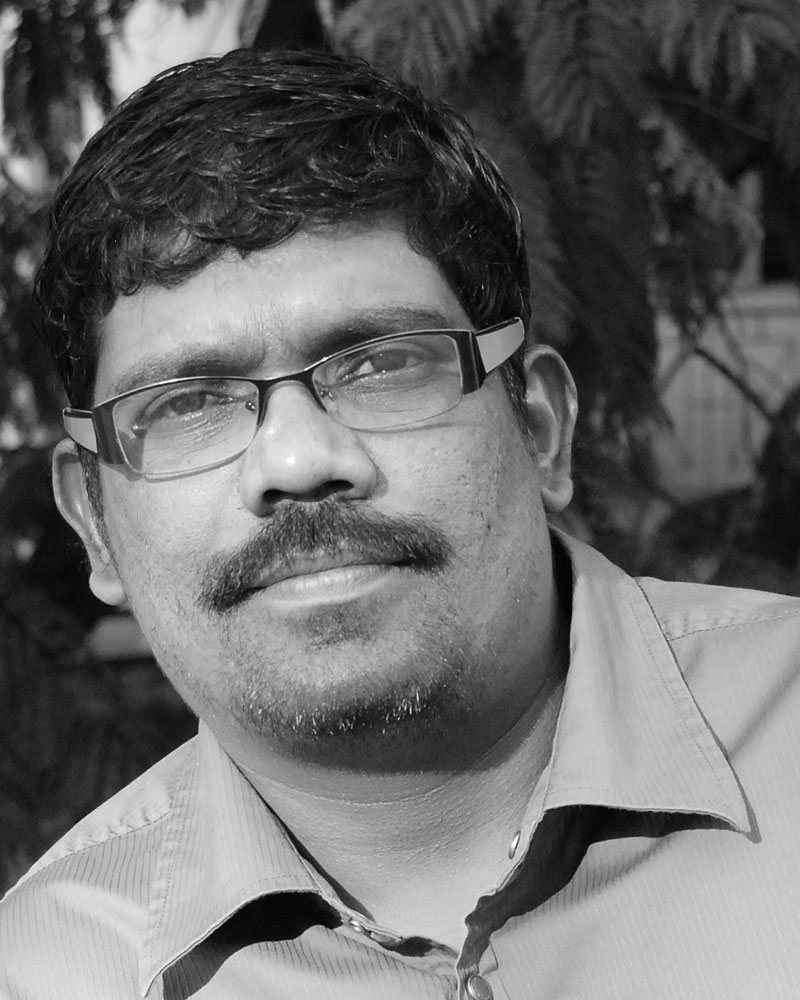
Born in 1968 in India, after studied applied arts at Collage of Fine Arts at Bangalore, Prakash learned animation at Heart Animation Academy Hyderabad and printmaking at Bangalore University. In 2006, he established Bangalore Artists Center, artist in residence program (BAC). Prakash produces installation and sculptures by mixing crafts/ready-made objects and advertisements/propaganda that are communicable to people expressing how complicated contemporary society is, especially questioning Indian political consciousness. Prakash’s major solo exhibition are “Give Me The Thumb of Your Right Hand,” at Gallery Sumukha, Bangalore 2013, “Chennai Art Festival,” Apparao Galleries, Chennai 2011, Triad Contemporary Art of India, Loveland Museum, Colorado, 2010, “Video Art Festival at Chitra Santhe,” Chitrakala Parishath, Bangalore 2009.
Selected Works
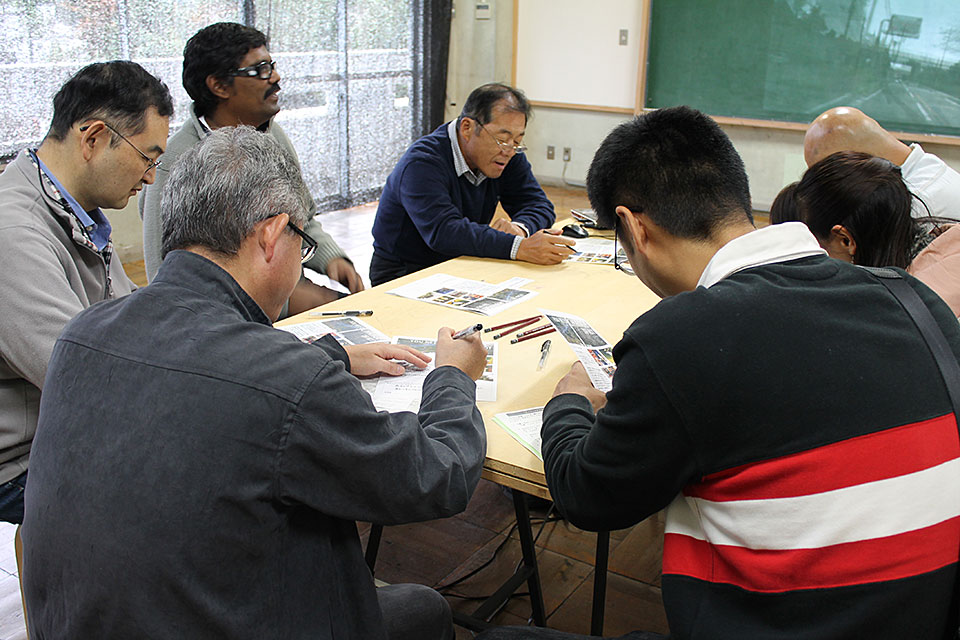
Conduct questionnaire survey about change at Open Studio #01
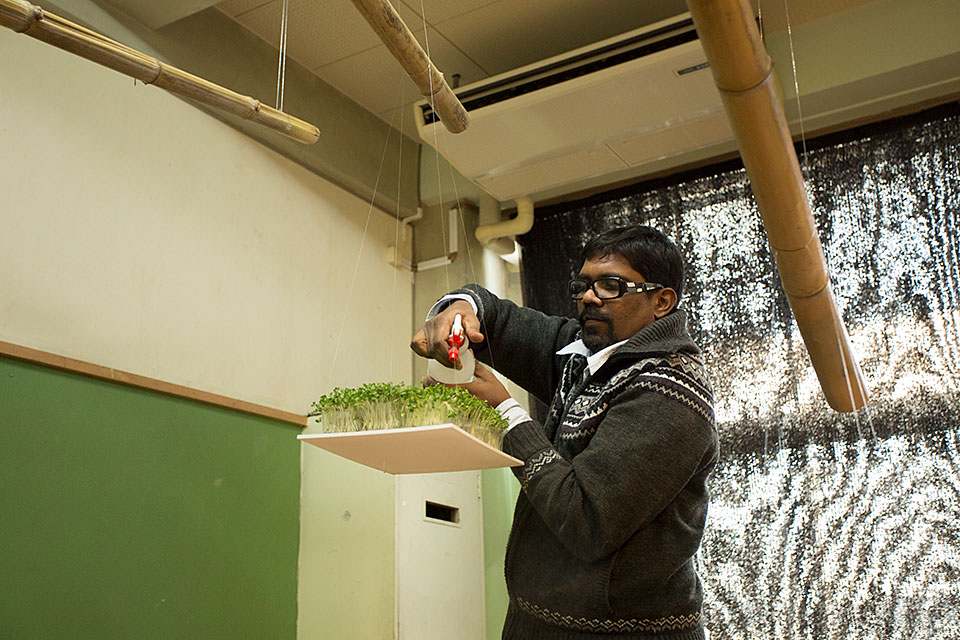
jivana farm, organic vegetable farmer

Check the condition of sprouts

Research on scrap materials at Joso Environmental Center
Open Studio

Hanging Garden
Installation

Jivana – The Life/Existence
Video, 6’

Artist Statement
My works survive in the hinterland of myth and reality.
The personification of myth from everyday, in the contemporary context. These works are my investigation of the Known- within the great metaphor of alchemy there are no answers and no definite end,but the journey and process of experience of our existence.
This attempt is a tiny gesture in the universe, an aesthetic involvement in the process of understanding my reality as an individual, a citizen of a country and part of the lager global imagination called “ Our Universe”.
Reason for Selection
Installation of pilled up medals of curving American cartoon hero character on the blade of stone cutting knife and footlockers of solders for them to put their belongings, printing traditional Indian theater poem around these objects in comic like, at a glance, the work motifs popular things, yet it reflects Indian history and war as well as the unavoidable influence of America and Europe. These points of views made me curious what would he reflect upon or express by staying in Japan.
At the ARCUS residency, Prakash will use antique tools and materials that can be found in the area of Moriya. He will work together with local community to investigate their history. It is Prakash’s first time stay in Japan. I would like to see how he could weave stories by exchanging knowledge, technique and ideas by working together with professional to discover and meet new materials. (Guest curator/Arts Initiative Tokyo [AIT] curator, Horiuchi Naoko)
Exemplary for his eclectic approach without a signature style or material – but reiterative projects where communication and communion with the local can be seen as a central motivation – process, time and space, environment, dissemination of ideas to wide audiences. Where local environments, people, participation and community are principle assets within the work, his project research encompasses research to understand the site both socially and physically. Prakash’ immediately struck me as an artist whose themes and approach to his practice would be ideally suited to the ARCUS Project Residency Program.
In the context of Japan, a country currently undergoing a period of considerable reflection on the shortcomings of modernity, and in the context of wider the Asia-Pacific region, where urbanisation and urban expansion are taking place at unprecedented speed. Prakash’s residency project and his interest in society and our relations in the city, will, I believe, initiate and broker new conversations, shift preconceptions, highlighting the merits of the local, diversity, difference and distinctiveness – making spaces for conversation between differing groups. (Independent curator, Keith Whittle)
All of Comments by Keith Whittle, please check here.
Sybille Neumeyer
Germany

Born in 1982 in Germany, Neumeyer has been active in various careers such as communication designer, artist, and visual researcher. After she studied linguistic, art history and ethnology at University of Würzburg, Neumeyer received diploma in Communication design at University of Applied Sciences Würzburg. In 2011, she received a master degree in Visual Communication at Bern University of the Arts ( Hochschule der Künste Bern). Interested in multi disciplinary fields such as archeology, botany and geography, Neumeyer produces installation and video work using motifs of climate and natural phenomenona based on research and fieldwork. Major solo shows of Neumeyer were “ Silence of nature/nature of silence”, Akademie Schloss Solitude, Stuttgart 2013, “past present, presence absent – urban aspects” POGON, Zagreb 2013, major group shows, “In Our Backyards,” Werkschau/Halle 12, Leipzig 2012, “x:1 – the invisible part of the iceberg” Akademie Schloss Solitude, Stuttgart 2011. She also holds various workshops and lectures.
Selected Works

Interview with Honda Takako, a botanical artist
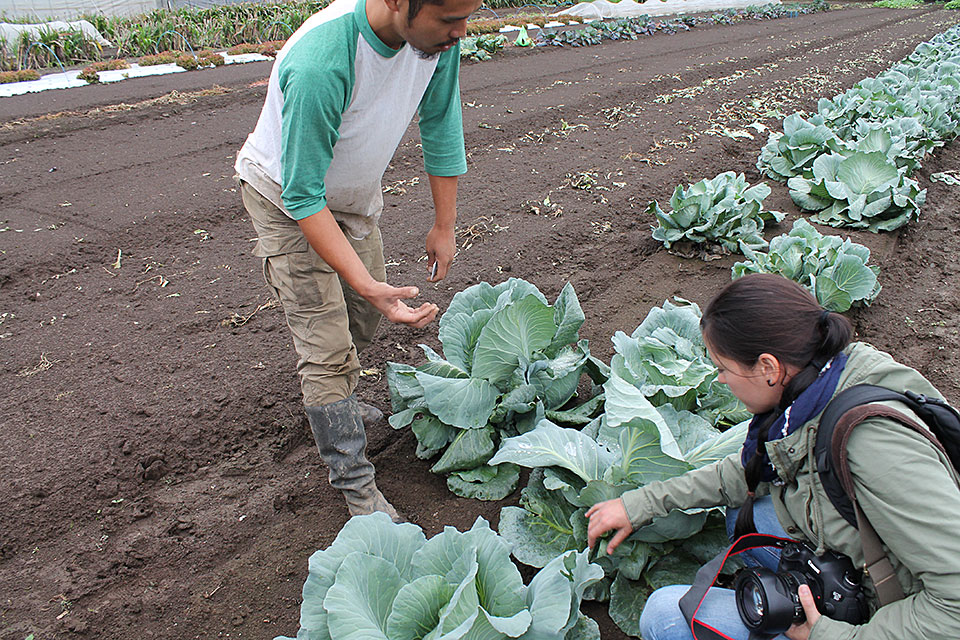
Visit to jivana farm
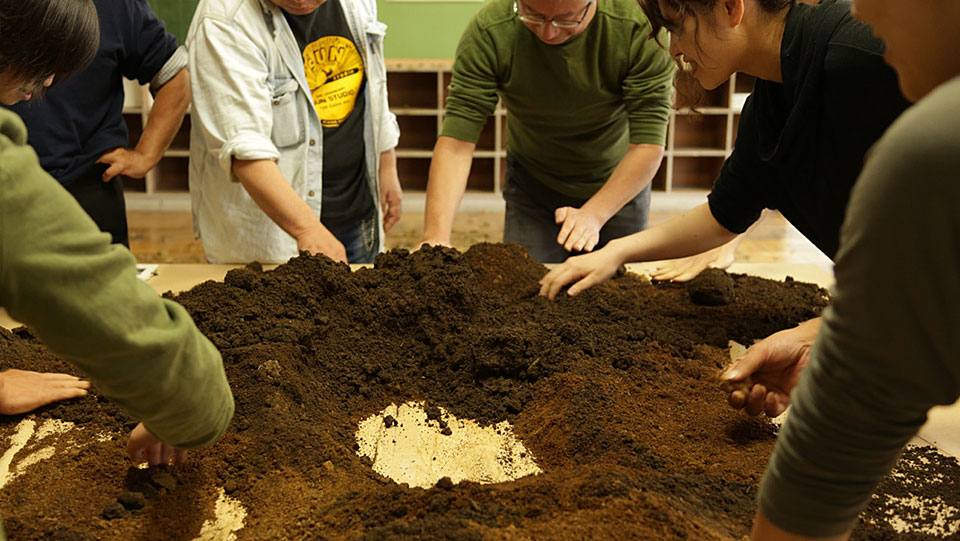
Workshop “common ground”

Experience catching Asian giant hornet
Open Studio
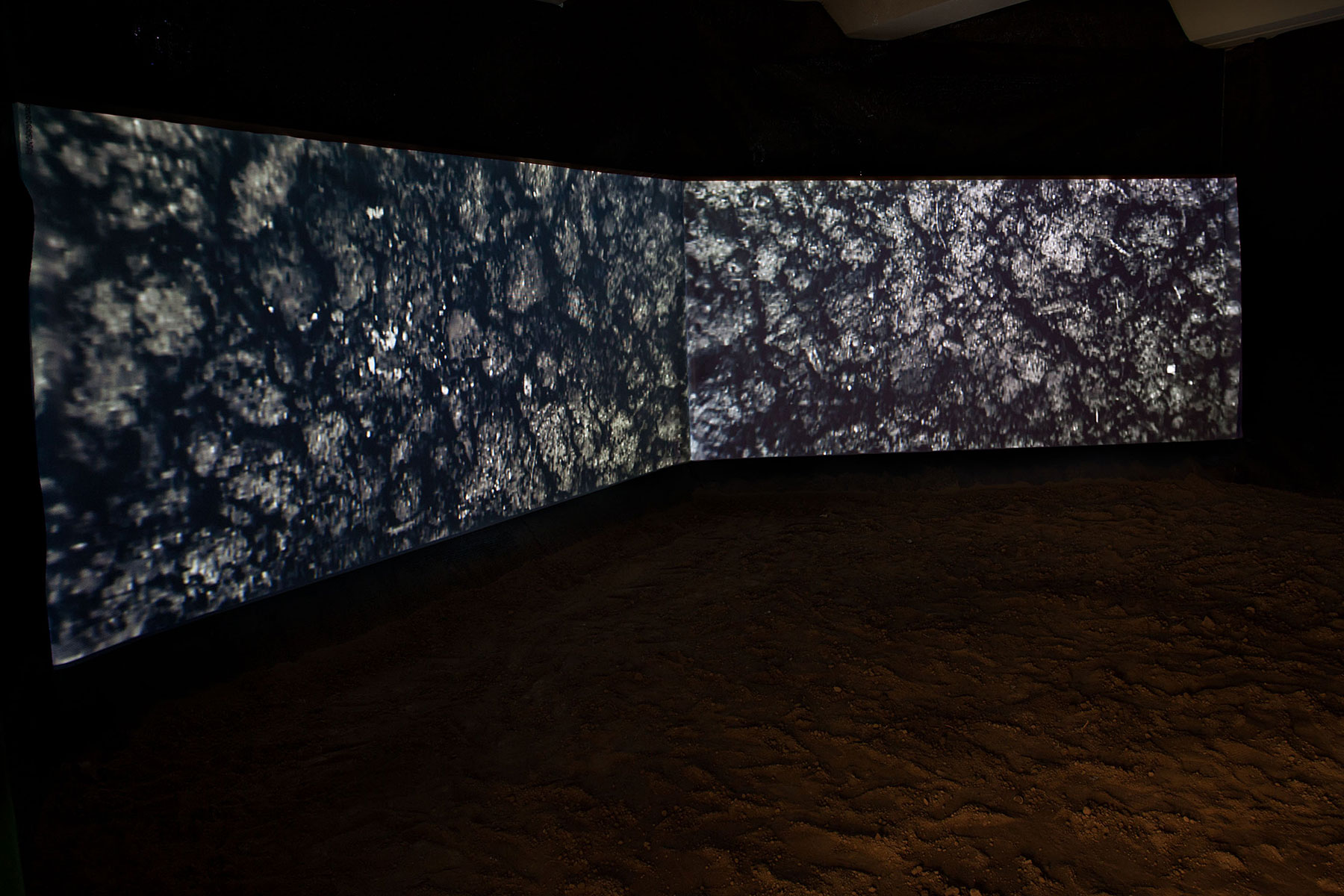
dialogue
2-channel video installation
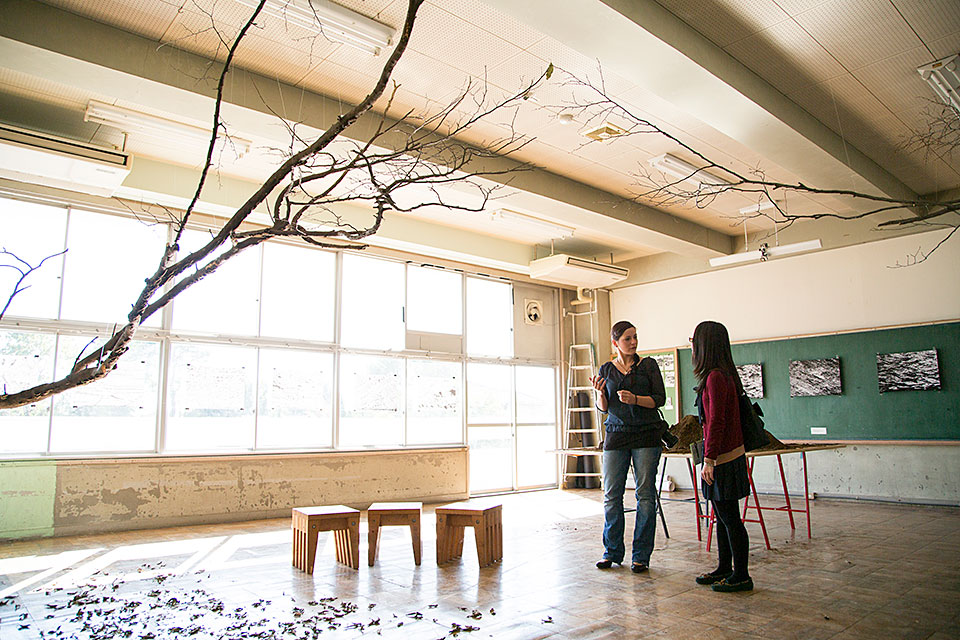
Open Studio #01
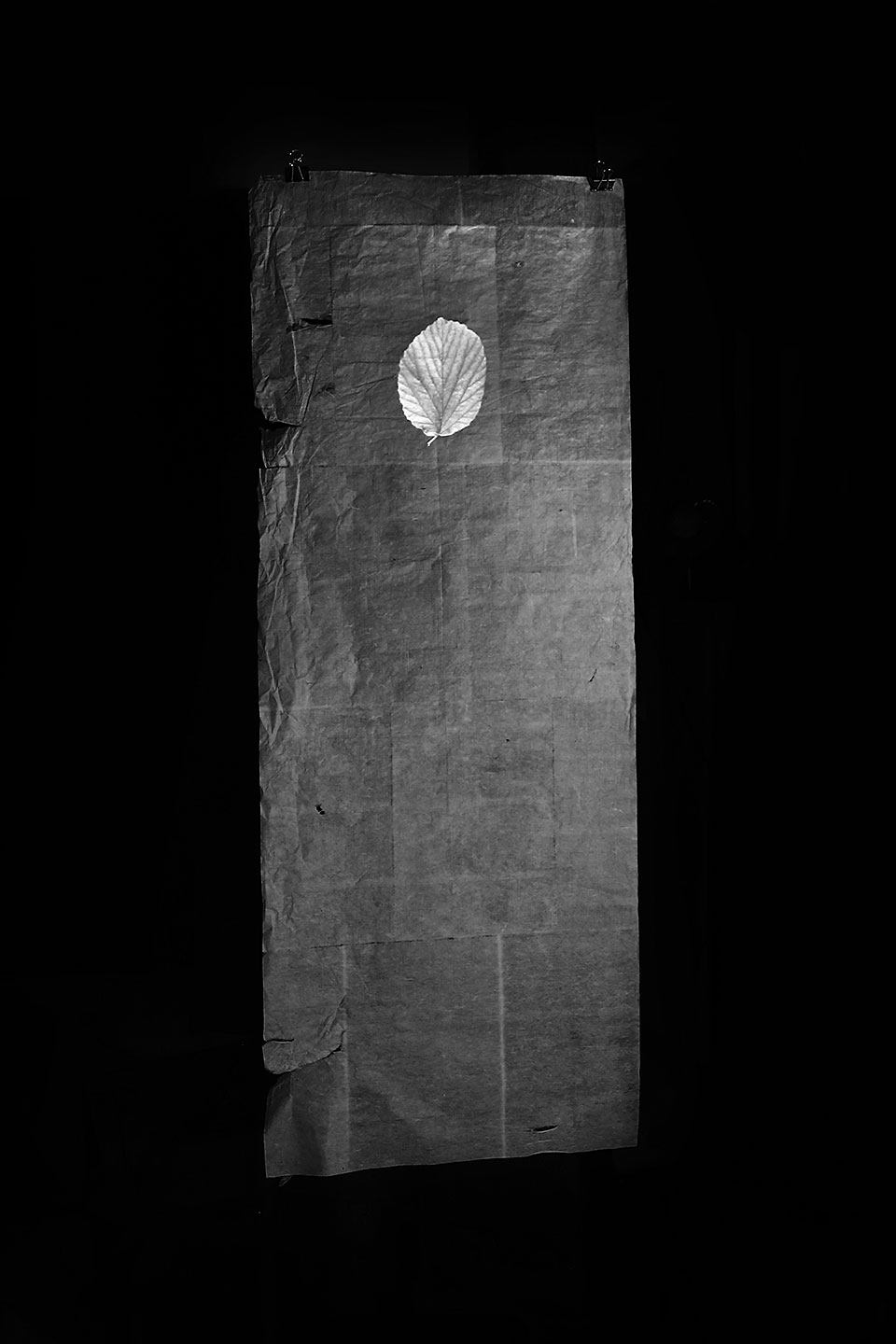
peripheral observations: specimen01
Single-channel video installation
Artist Statement
My project focuses on relations between human and nature. During the stay in Japan I investigate layers of history, present and future: how do our connections to food, land, environment shift? Observing the local situation and rethinking global structures, I am trying enable a dialog between personal experience knowledge and the understanding of our environment beyond a natural bodily perception. Slipping in the role of a silent observer, I am interested in simple and small materials.
Reason for Selection
Having different background from art, Neumeyer’s diversified works, such as about endanger species of bees, the spring source gushing at Gobi desert and the ruins burned under the history are interesting. The installation, “Song for the last Queen,” using 7614 bees, 1/8 of the whole colony, she conserves each bee in honey with the glass tube like the mummifying king in ancient times. Such work reflects environmental changes from animal and plant’s small reaction, showing natural traces caused by the seasonal changes poetically while questioning human ego of eager to control nature and endanger species. For this residency, Neumeyer will exchange ideas with scientist and botanist and will research biodiversity with local people in Moriya. There is a great expectation on her viewpoint and approach, not strictly expressing into art form, which can show us a new direction. (Guest curator/Arts Initiative Tokyo [AIT] curator, Horiuchi Naoko)
Presenting the familiar – spaces and contexts, but shifting our perceptions of such through investigation of a proposition, or situation and discourse in any given work – as much as part of the creative act as interaction with the work. Her work makes visible what is often hidden and engages us with forces that though often seemingly intangible or insurmountable are too important for us to ignore.
Nuemeyers’ residency proposal tackles some of the key questions about culture and nature and is fertile ground for process and research. (Independent curator, Keith Whittle)
All of Comments by Keith Whittle, please check here.